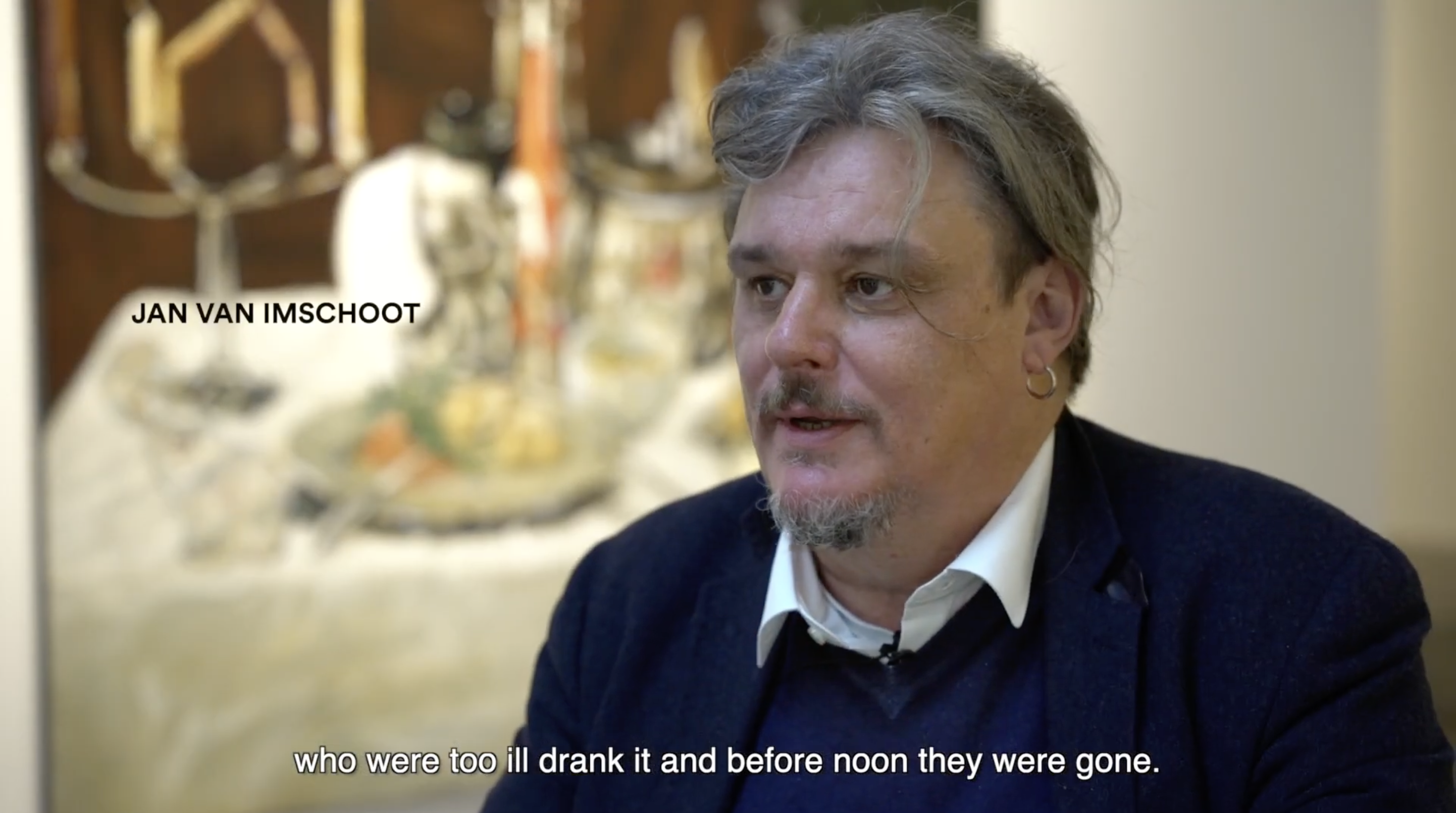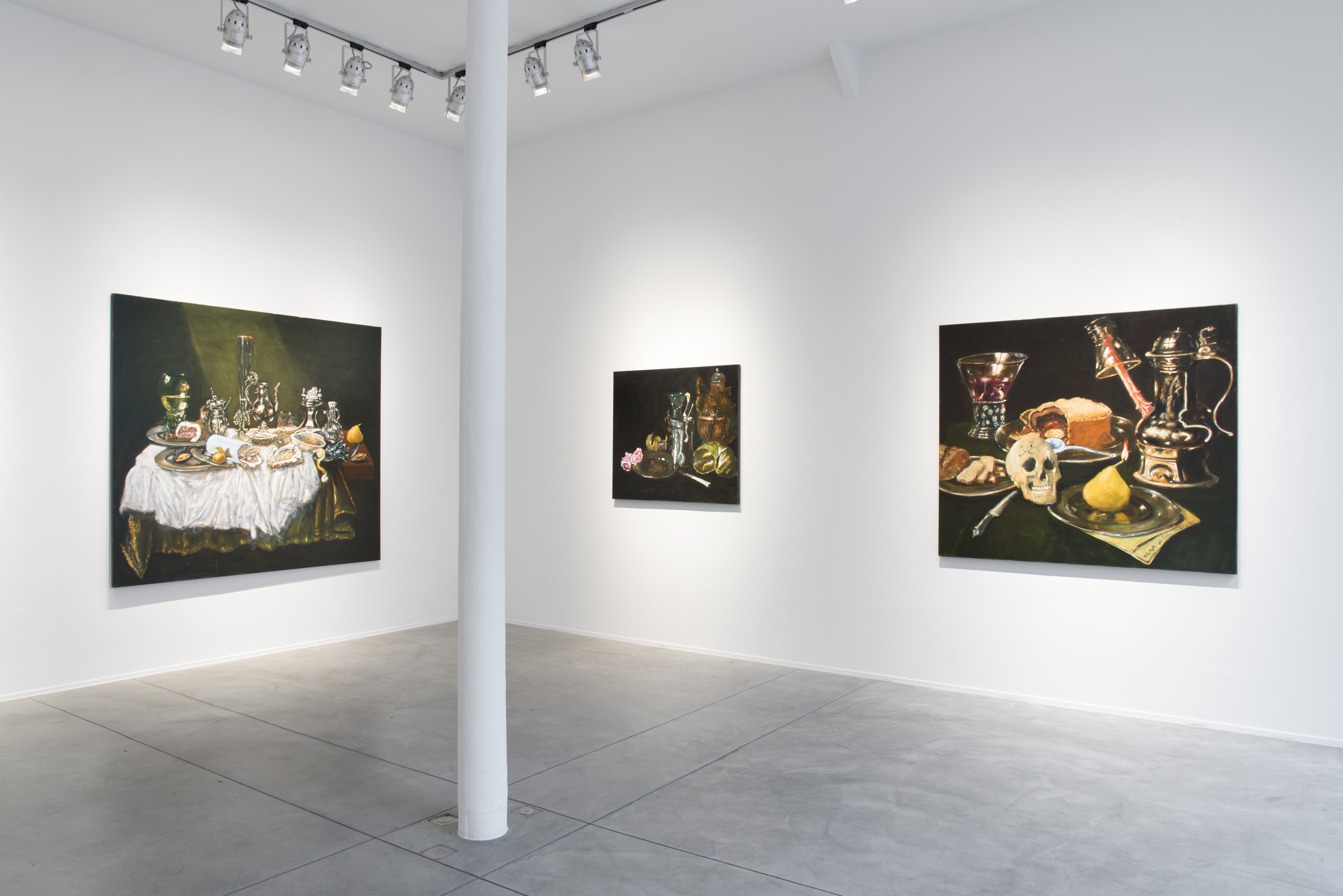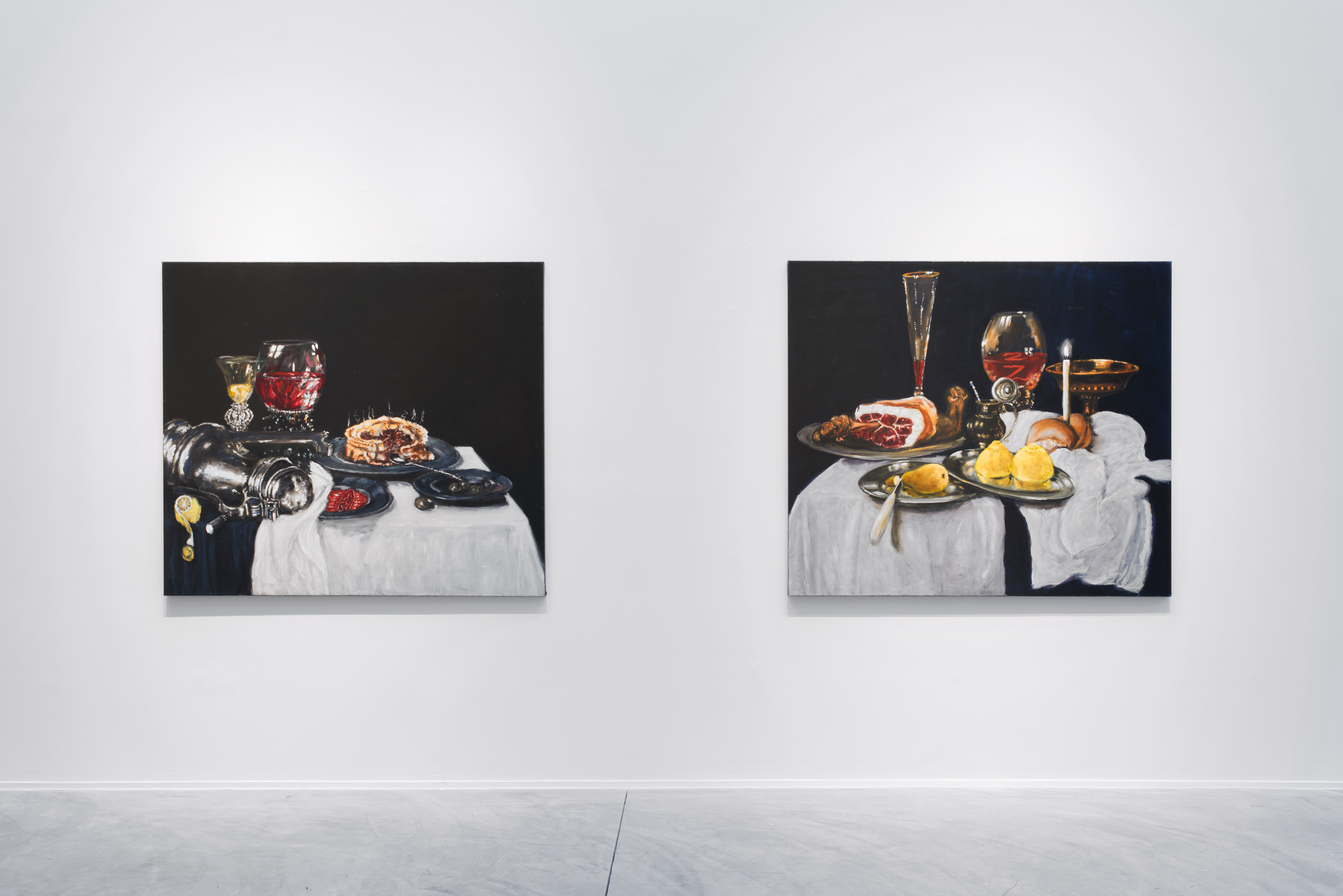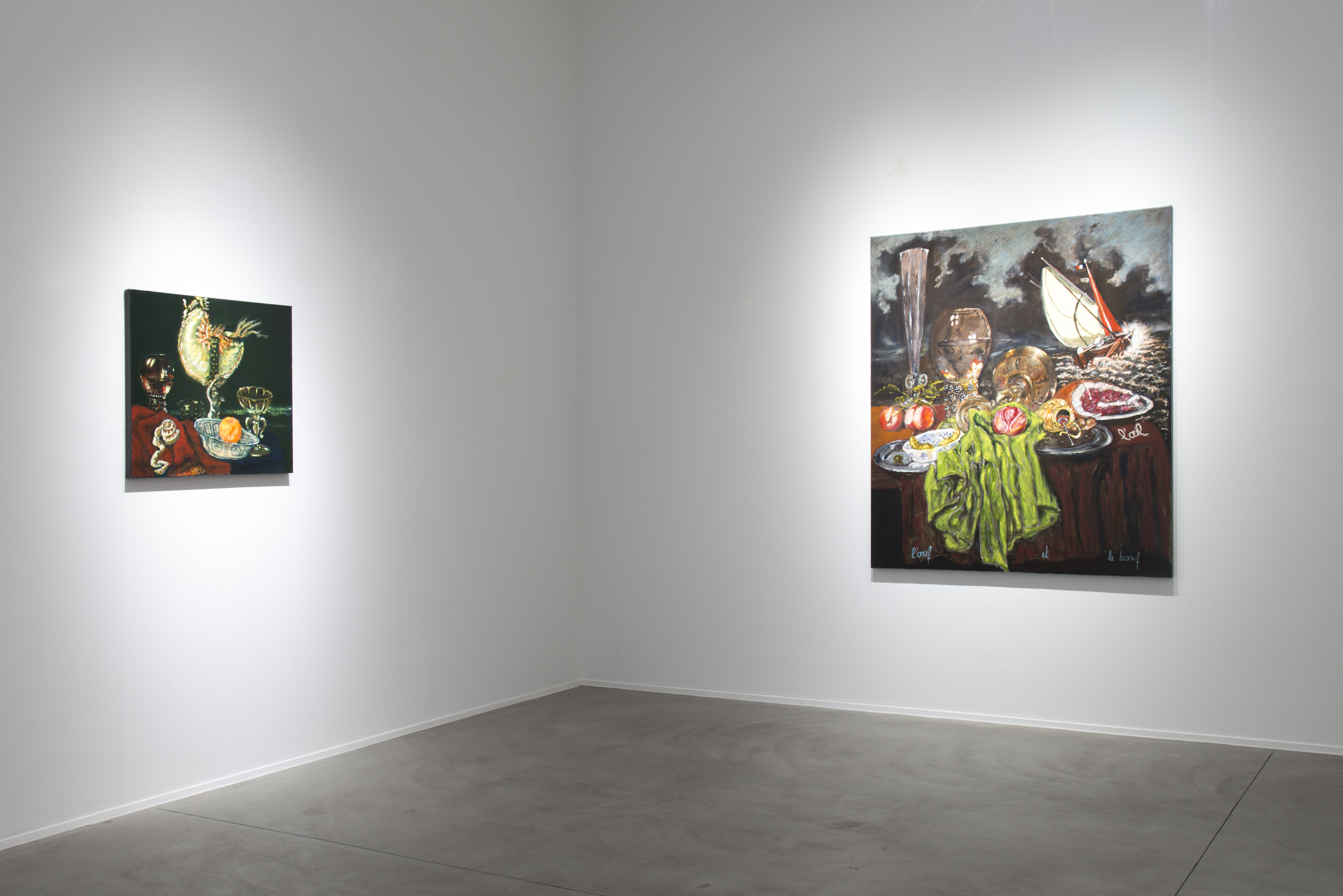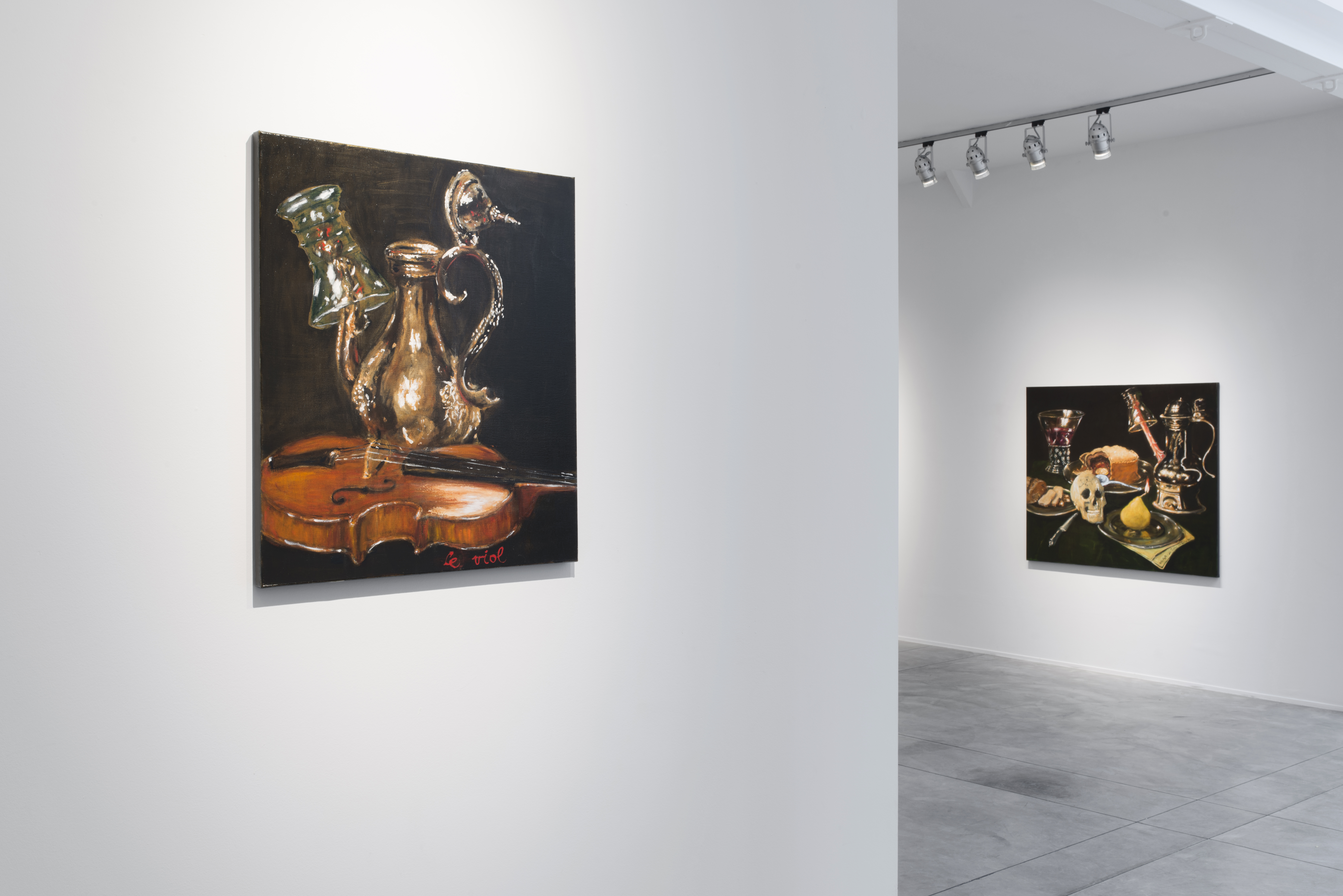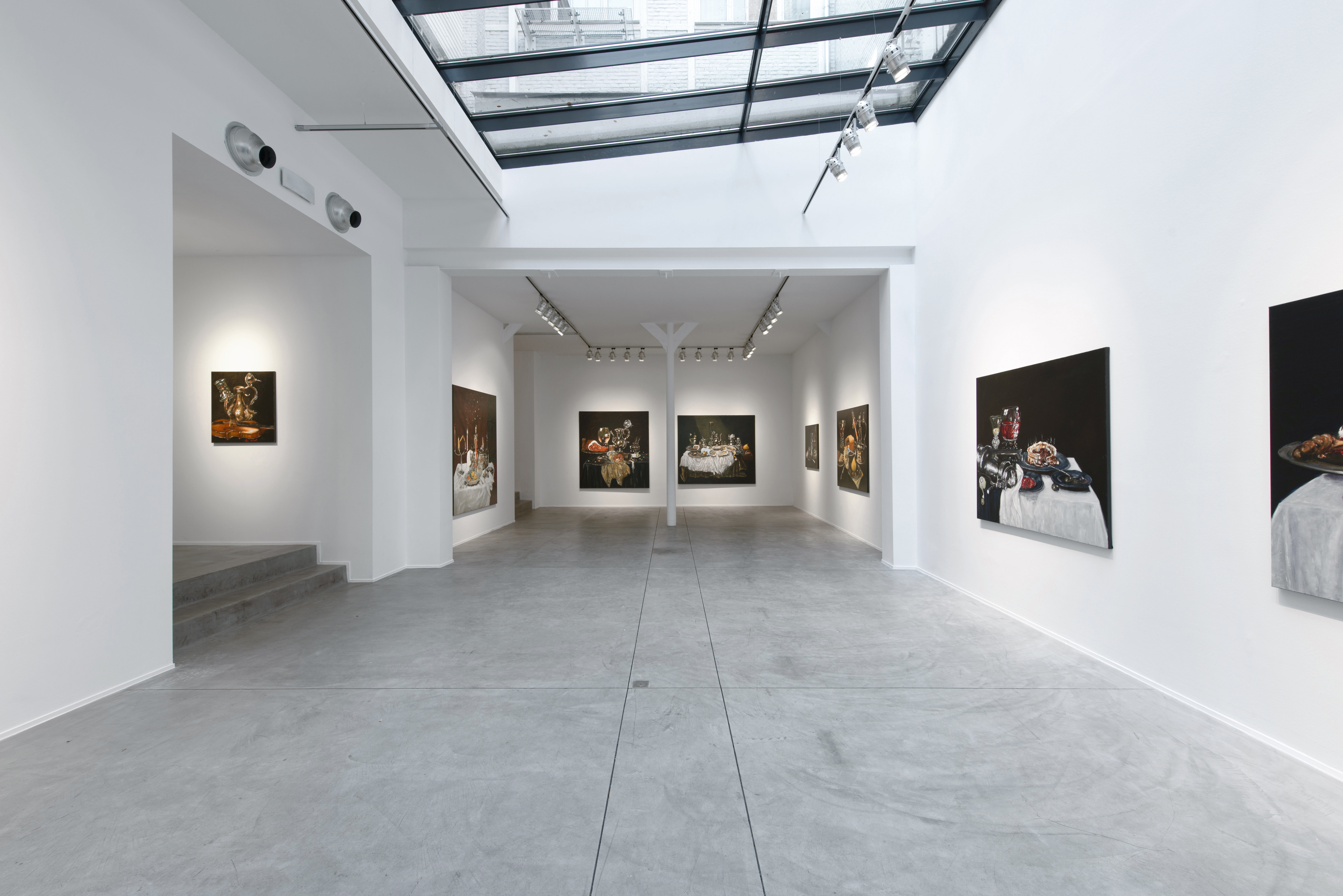
Jan Van Imschoot
Le bouillon de onze heures
Two years after his last exhibition at Galerie Templon, Belgian artist Jan Van Imschoot, the self-proclaimed master of “anarcho-baroque”, is returning to his native country to present a new series of restyled still lifes.
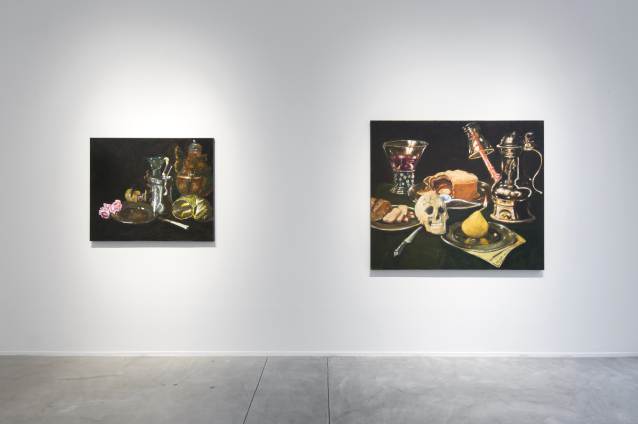
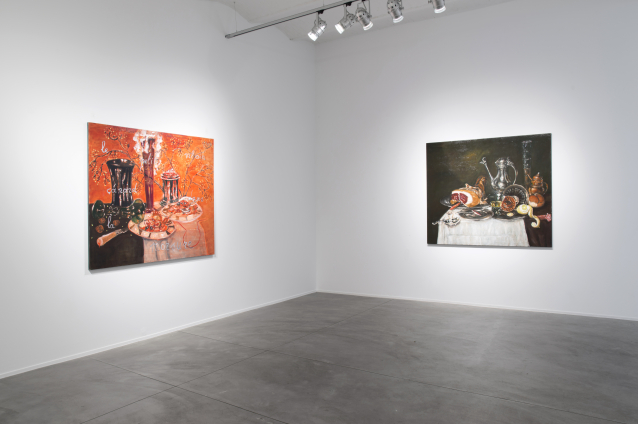
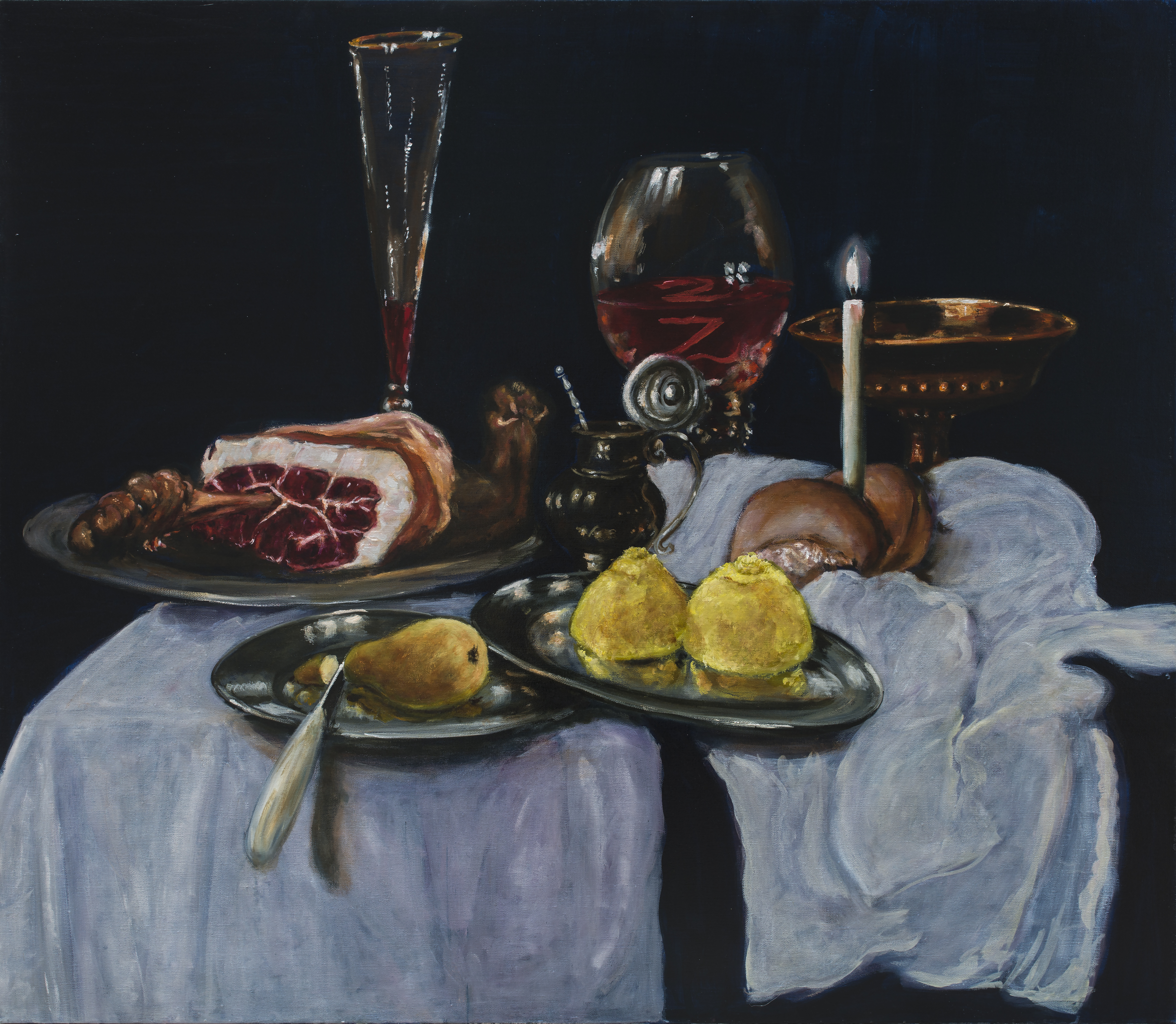
In Le bouillon de onze heures (the 11 o’clock broth), Van Imschoot explores the art of the 17th-century Northern School. The artist looked for inspiration to the silent universe of one of its masters: Willem Claesz Heda. Following in the footsteps of the one of the most illustrious of Flemish painters, Van Imschoot reworks the still life form to reflect his distinctive universe, restoring its noble status thanks to his virtuosity and mastery of the subject.
Against dark backgrounds lit up by flashes of flamboyant colour, he immerses us in 17th-century Flemish bourgeois life, a gleaming world of luxury tableware, sophisticated dishes and precious silk tablecloths. But Van Imschoot’s paintings are unfailingly ambiguous: behind this enchanting-looking world lies another, more complex universe. Rooted both in representation and imagination, reality and fantasy, Van Imschoot’s work abounds in erotic, historical and religious motifs. As he explains, “paintings can present an innocent-looking world, but anyone familiar with the art of symbols and associations of shapes can project their own perceptions onto them at will.”
The exhibition thus offers a series of canvases conveying an equivocal message. There is the sumptuous coffeepot featuring a crystal glass tipped over its spout and, in blood-red letters, the words “the rape”. An old-fashioned feast blends into a landscape formed by a tempestuous sea. An ancient wine glass stands next to a pack of cigarettes. And then there is the show’s title, Le bouillon de Onze heures [Eleven o’clock broth], a double-edged expression as it refers to a dying person’s last meal, which could be poisoned or could be comforting.
At a time when the issue of political correctness divides our Western societies, Van Imschoot questions the role of art and artists. Should art always suggest or should it lay bare? As soon as a work is displayed, telling a story with a thousand and one facets, it can be freely interpretated by anyone viewing it. “Our imagination has a crucial role to play”, he explains, guiding us on an alternative exploration of our history and the meaning of our existence.

Le bouillon de onze heures
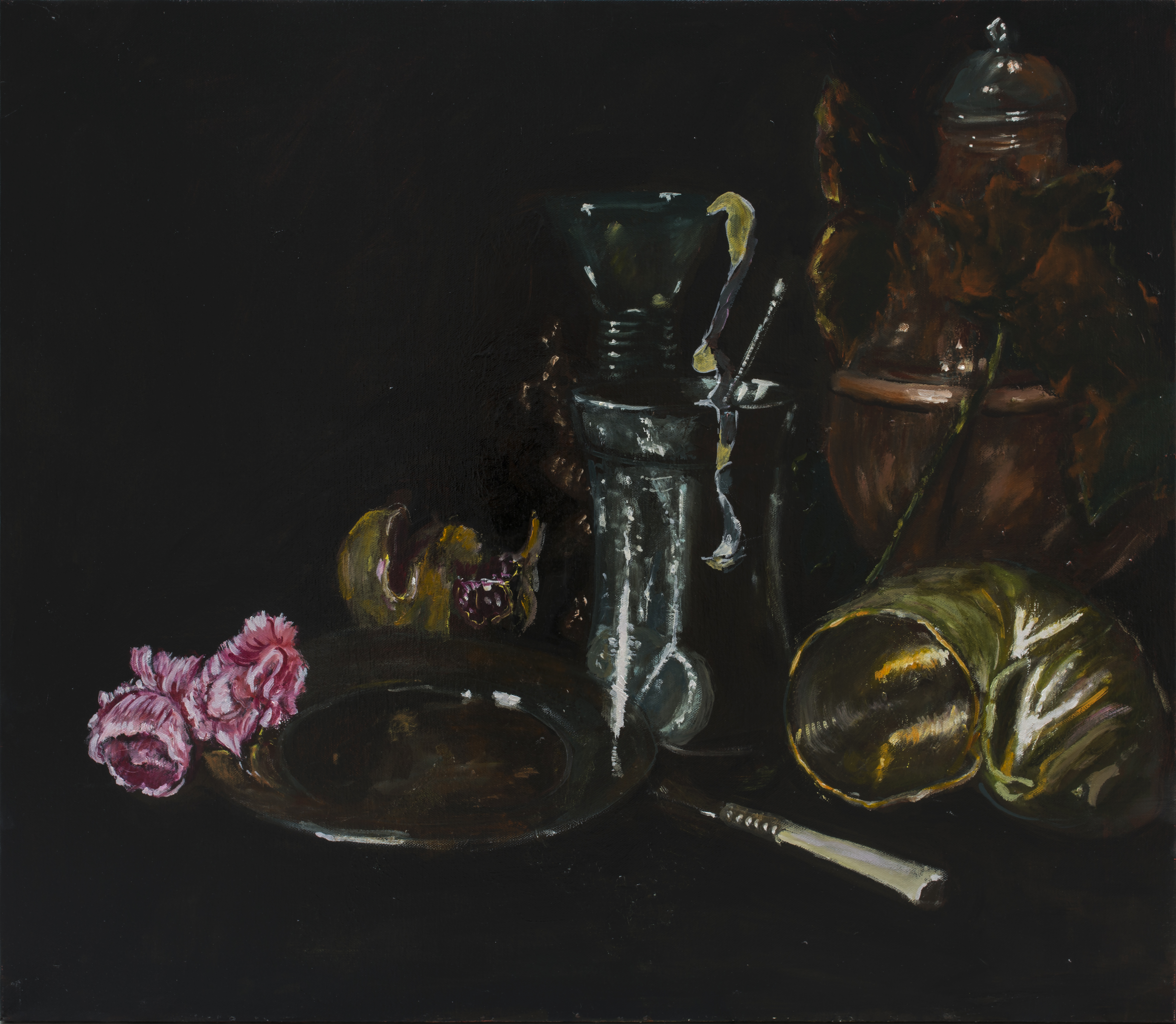
The artist
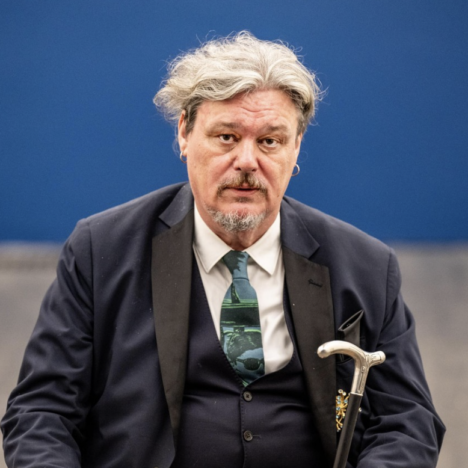
Born in 1963 in Ghent, Jan Van Imschoot has been living and working in France since 2013. Jan Van Imschoot’s exploration of the possibilities offered by painting have resulted in a body of work that draws its power from highly critical and dramatic themes and contains references to countless artists, from Tintoret to Luc Tuymans, Goya to Matisse. Jan Van Imschoot places his figures, decors and narratives at History’s margins, using assembled perspectives, strong tones, bodies in motion and brushwork he describes as ‘anarcho-baroque’. His work delves into a number of recurring motifs: freedom, censorship and the violence of political and ideological systems.
